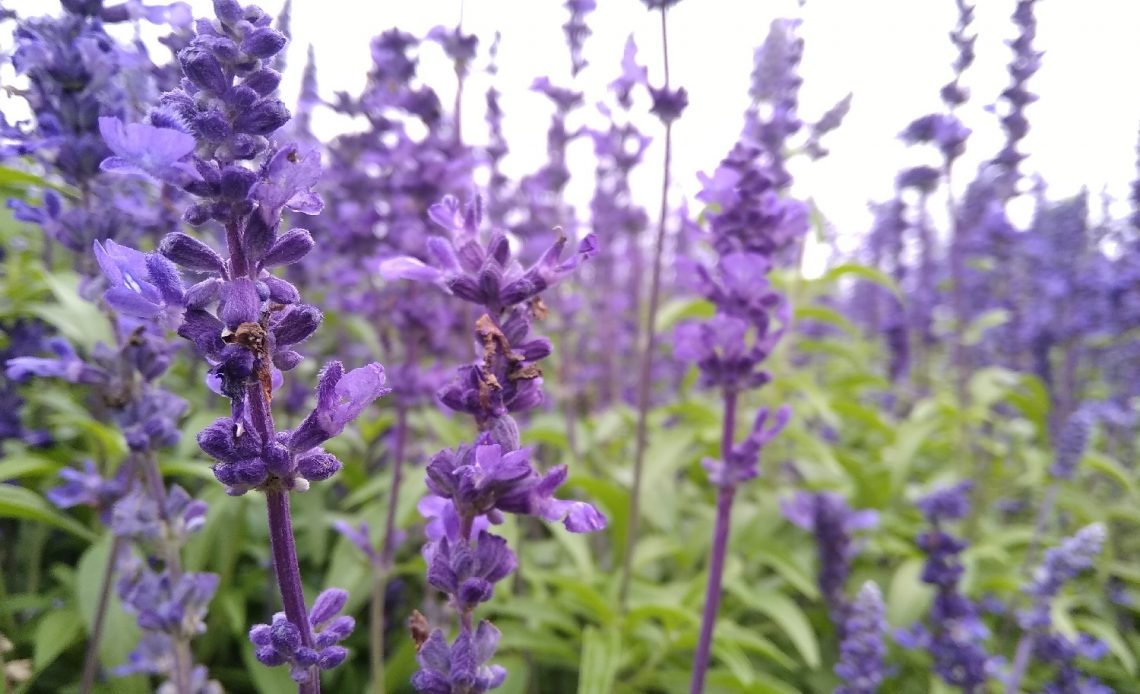

We’re here to help! Wild Yards is a completely free website that is 100% dedicated to helping you create a wildlife-friendly, sustainable yard. Read more
WildYards is reader-supported. When you buy a product through a link on our site, we may earn a comission. Every product is independently selected by our (obsessive) editors and our reviews are unbiased and objective. Read more about our mission or our privacy policy.
With its elegant silvery foliage and fragrant purple flowers, lavender is a popular plant among landscapers and backyard herb gardeners. This shrub is easy to grow and doesn’t require much attention. But lavender has several lookalikes, including Russian Sage. Grown side by side, it can be difficult to tell these two plants apart. But when you compare Russian sage vs. lavender, how do they differ?
The biggest differences between Russian sage and lavender are the way the plants smell and the color of the flowers. Lavender flowers range from pink to pale purple to deep amethyst and produce a distinctive sweet yet woody scent. Conversely, Russian sage flowers are periwinkle, purple with blue undertones, and smell vaguely of sage.
Russian sage vs. lavender — comparing flowers
Viewed at a distance, Russian sage and lavender look a lot alike. Both plants produce silvery green foliage, and both plants grow purple flowers at the tips of long stalks (these types of flowers are called inflorescences). A closer inspection of the flowers themselves can help you determine which plant is which.
Each Russian sage flower is actually comprised of dozens of smaller, trumpet-shaped blossoms. These tubular blooms are characteristic of other members of the Salvia family.
Lavender flowers are also clusters of blossoms, but the flowers themselves are not tubular. They’re shallow and have a slightly open face that makes it easier for pollinators like bees and butterflies to collect nectar.
Another way to tell these two plants apart is by observing when they’re blooming. Russian sage plants flower late in the year, from midsummer to fall. But lavender plants bloom in mid-spring and early summer.
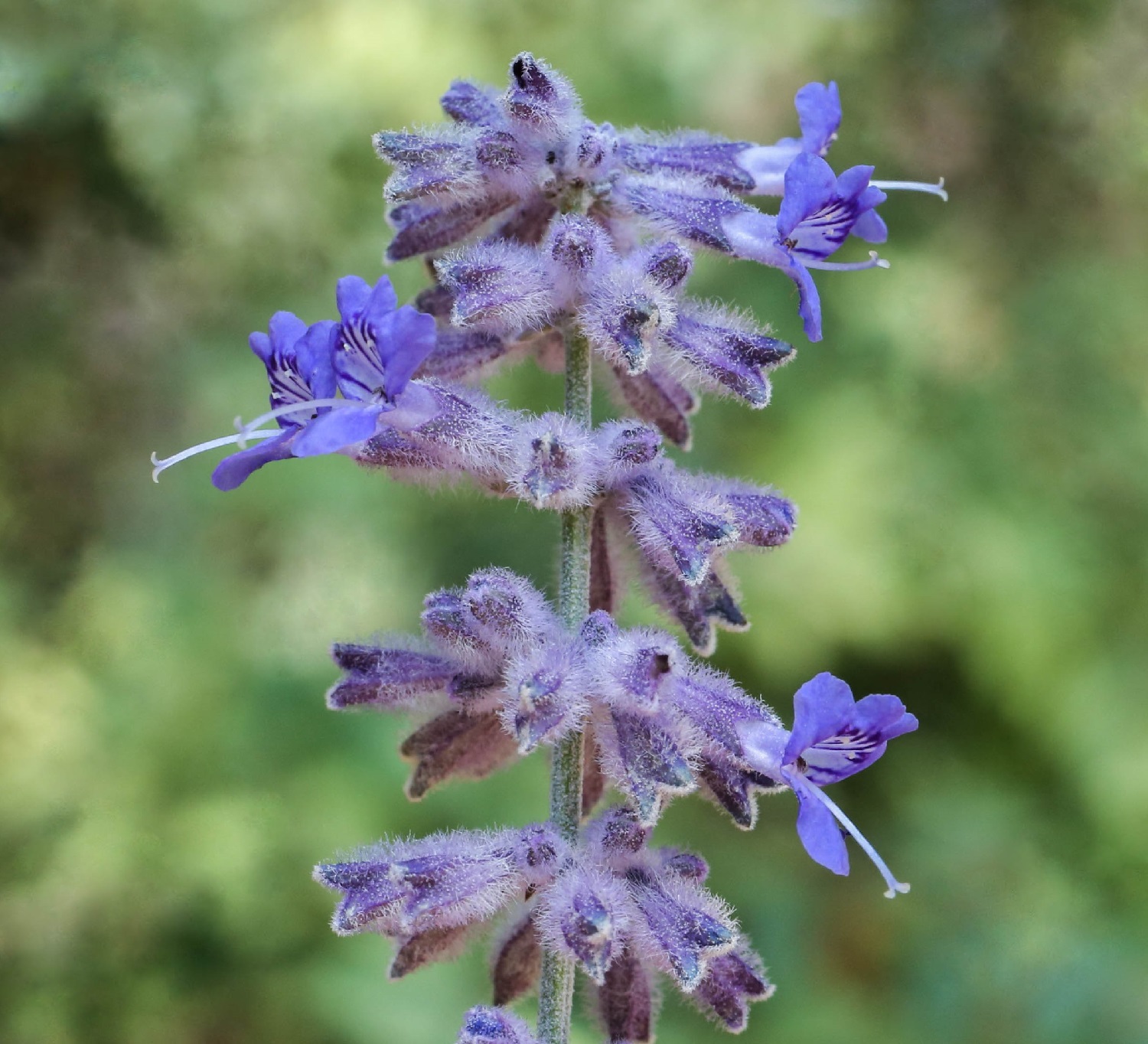
Russian sage is bigger than lavender
At maturity, Russian sage can be 5 feet or taller with an impressive spread of 4 feet. It’s a sizeable shrub with fern-like leaves and spindly stems that grow much like rosemary. It’s also worth noting that with Russian sage, the leaves continue all the way up the stems to where the flowers begin.
How big lavender plants grow depends on their variety. Mature French and Spanish lavender plants can reach 3 feet tall by 3 feet wide, with English lavender only growing 2 feet tall. These plants are more compact and have denser foliage than Russian sage. They also tend to produce flowers at the center of the plant. And the blooms are situated at the ends of long, leafless stems.
Russian sage and lavender are both perennials, and they’re both long-lived. The same lavender plant can keep growing for upwards of 15 years. While Russian sage can grow just as long, these plants may suffer a decline at 4 to 6 years old. At this point, the plants benefit from being divided and re-planted, so they can continue to grow properly.
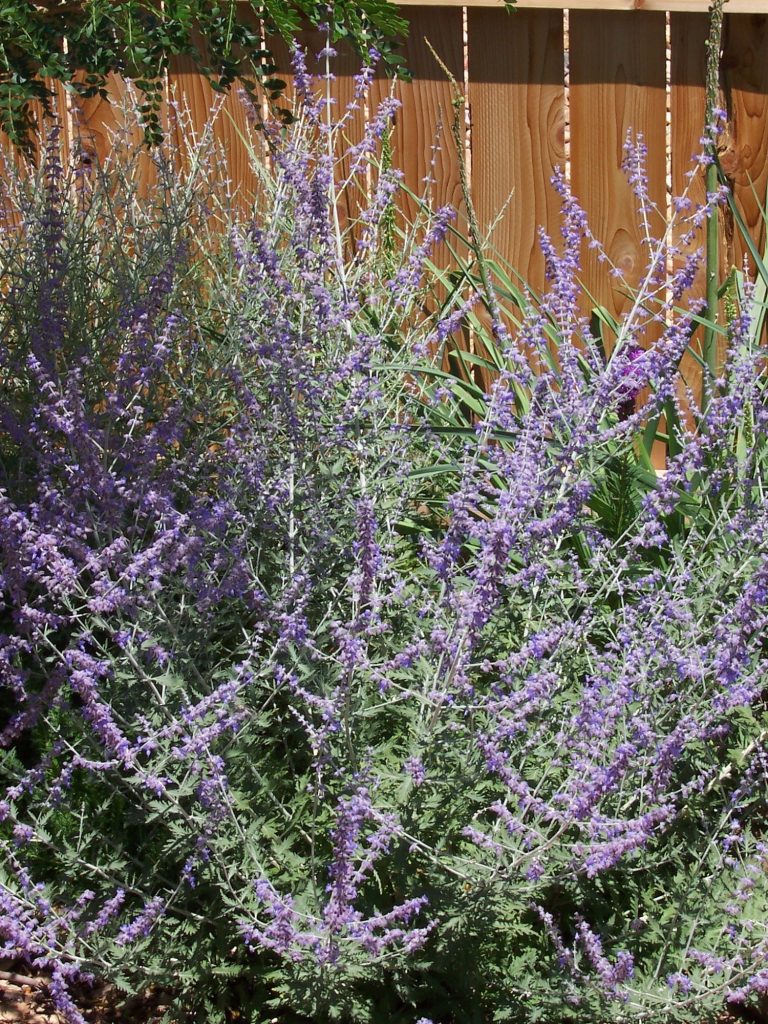
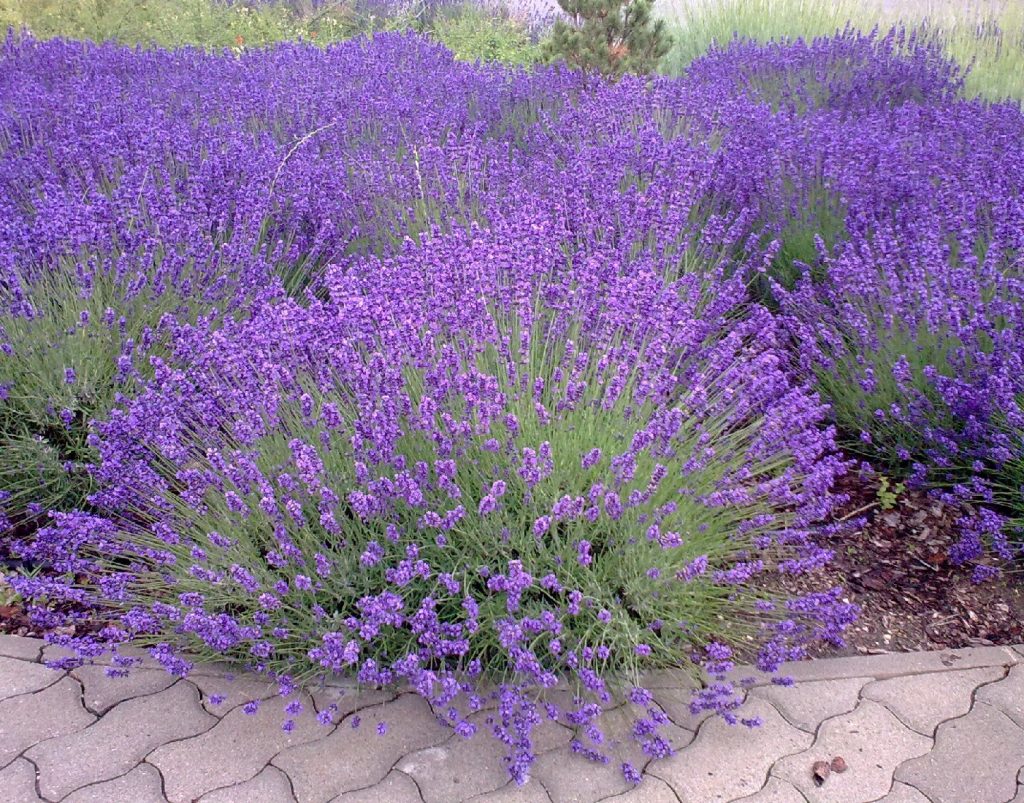
Lavender leaves are narrower than Russian sage leaves
Lavender leaves vary depending on the variety. English lavender produces velvety, elongated leaves with smooth edges that are gray-green in color. French lavender’s leaves are similar in color, but they’re more intricate, with toothed edges that give the plant a fern-like appearance.
Lavender leaves can grow quite long, particularly at the bottom of the plant where they can reach roughly 2-inches in length. But no matter how long the leaves grow, they remain narrow. Russian sage’s leaves also grow around 2 inches long, but the leaves are broader spanning 1 inch across.
Compared to Russian sage, lavender leaves feel plumper, almost like succulent leaves. And that’s because lavender’s foliage is loaded with essential oils. Consequently, you’re more likely to notice a strong perfume when walking by a lavender plant. Because Russian sage leaves don’t contain much essential oil, they don’t smell as pungent.
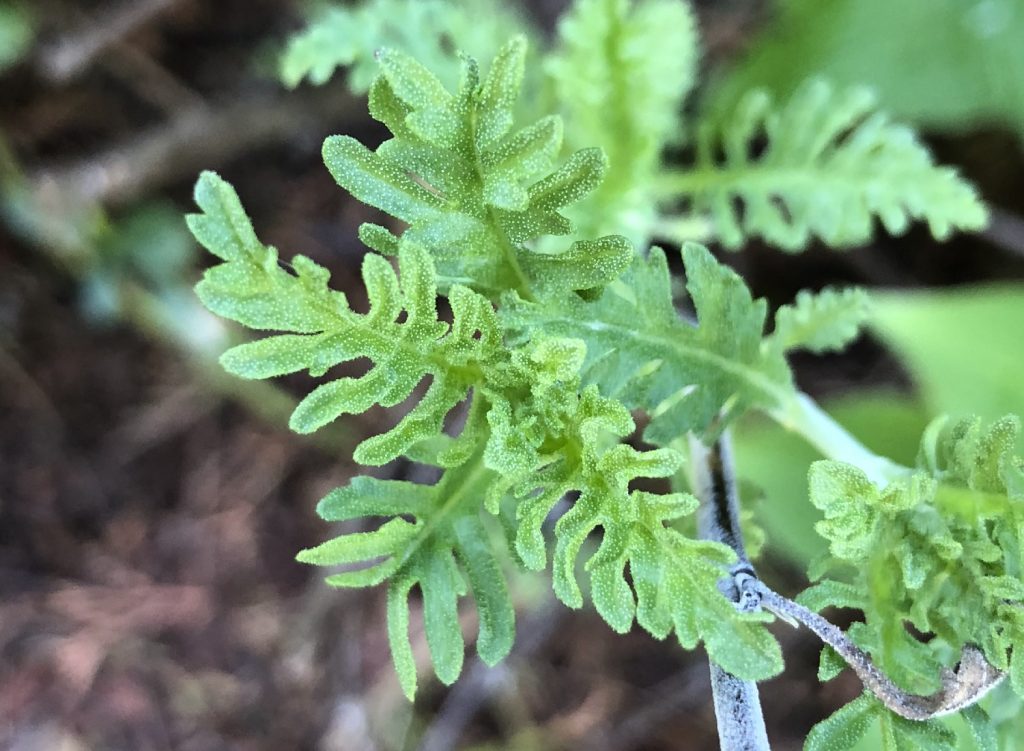
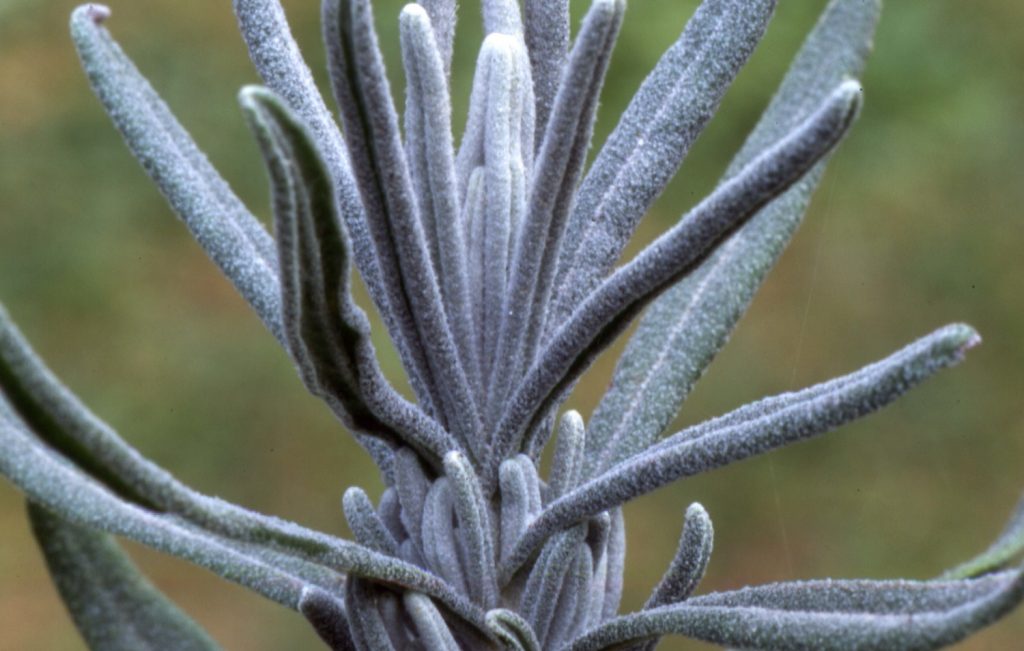
Russian sage vs. lavender — growing requirements
In spite of their differences, Russian sage and lavender share similar growing requirements. Both plants grow in zones 5 through 9. Both plants prefer to be grown in full sun in sandy soil that is nutrient-poor and that drains well.
These plants also don’t like to be fussed over. They grow best when they’re left alone. Unlike hydrangeas or azaleas, Russian sage and lavender plants don’t need to be fed annually to stimulate production. These plants thrive in harsh conditions that would kill many other ornamentals. And as long as you meet their basic requirements, they’ll grow like weeds all on their own.
Lavender prefers alkaline soil
One thing to note is that, while lavender and Russian sage both prefer sandy soils, lavender grows best in soil that is slightly alkaline with a pH of 6.5 to 8. Growing lavender in acidic soils will result in fewer flowers and a weaker fragrance. And because acidic soils don’t meet lavender’s ideal growing conditions, it can make the plants more prone to diseases, like powdery mildew and root rot — both of which can kill lavender in a matter of days.
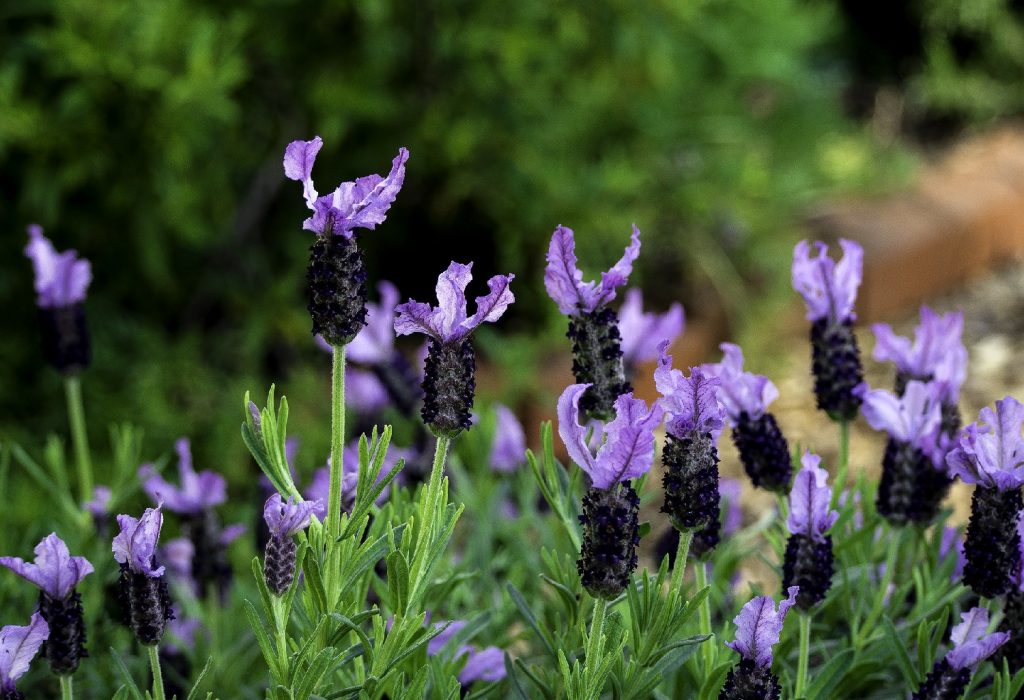
Russian sage can thrive in acidic soil
If you have acidic soil, Russian sage is better suited to your region. While Russian sage also prefers neutral to alkaline soils, it won’t suffer if you grow it in soils with lower pH. Keeping Russian sage in acidic soil won’t stunt the plant’s growth or affect flower production, so it’s a safer alternative for anyone whose backyard has acidic soil.
Neither of these plants likes too much water
If there’s one thing you need to know about Russian sage and lavender it’s that these plants don’t like to sit in water. Their soils must be well-drained, which means they need to be loose and porous with low clay content. Whether you choose to grow Russian sage or one of the many varieties of lavender, we highly recommend amending your soil with lavender potting soil before planting.
While both of these plants are drought-tolerant, they’re also water-sensitive. Russian sage can handle more water than lavender, so if you live in a wetter environment, it’s the safer choice. But both of these plants should be allowed to dry out completely in between waterings. Sitting in water for prolonged periods of time won’t do either of these plants any good as it makes them prone to root rot.
Once root rot sets in, affected roots must be trimmed off with sterilized clippers. The plants must then be transferred to new soil where spores of this disease won’t cause further infection. Lavender plants that develop root rot almost always die. Russian sage is more forgiving of accidental overwatering than lavender. But chronic overwatering will still result in root rot. So be careful not to drown either of these plants.
Russian sage vs. lavender — use in garden landscaping
Because it’s compact, lavender is perfect for growing in pots and raised flower beds. This perennial plant can be allowed to grow wild, but it can also be pruned to maintain a manicured appearance. If you live in a cooler, drier climate, you can grow your lavender bushes together as a small hedge. Otherwise, growing lavender in containers is easier because it allows you to control its growing conditions.
Russian sage has a broader spread and its sprawling, spindly nature makes it a better choice for flower beds. These medium-sized shrubs make beautiful accent bushes. Of course, you can certainly grow Russian sage in pots. But because these are fast growers, you’ll have to trim them back regularly to prevent them from becoming leggy. When grown in the ground with plenty of space to fill in, Russian sage can largely be left alone, as it maintains a uniform shape on its own.
Russian sage is toxic when consumed in high quantities
As it turns out, Russian sage isn’t really sage at all. Or, at least, it wasn’t considered to be sage for a long time. Previously known as Perovskia atriplicifolia, it was only in 2017 that scientists began including Russian sage (Salvia yangii) in the Salvia family.
Russian sage does smell faintly like sage. And it can be harvested to use in cooking, baking, and homemade salads. Keep in mind, though, that Russian sage leaves do not contain as much essential oil as lavender foliage. So most people prefer to grow and harvest common sage (Sage officinalis), which has a more potent flavor.
In spite of the fact that Russian sage isn’t as tasty as other culinary varieties, this herb has been used for years to treat a variety of ailments, including congestion, sore throats, and fevers. But consuming too much Russian sage can prove toxic. So most home remedies that utilize this herb as an ingredient are topical, not internal.
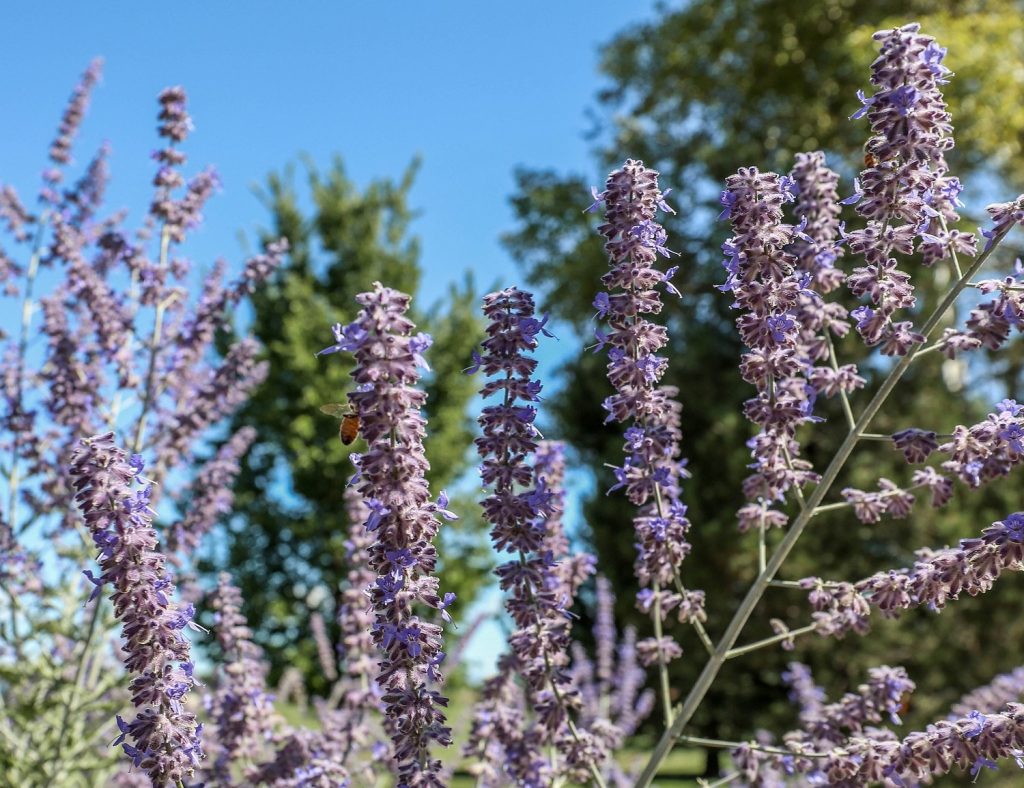
Lavender has potent medicinal properties
Whether you grow lavender in pots or include a few lavender trees as part of your landscaping, the flowers and foliage can be harvested for their medicinal properties. Homemade lavender essential oils are great for including in home remedies, natural insecticides, and DIY rose petal skincare recipes.
Lavender (Lavandula) has powerful healing properties and is used to treat fungal infections, depression, nausea, and hair loss. This fragrant herb tastes much the way it smells — sweet and slightly minty. This makes it a popular ingredient in homemade ice creams, sorbets, and lemonades.
Backyard foragers often include fresh lavender buds in spring salads for a burst of sweetness. The flowers can be candied, dried, or washed and used fresh in dessert recipes. Try infusing some local honey with a cup of lavender buds for a sweet lavender-flavored treat.
(Note: All essential oils are toxic, and therefore are not safe for consumption, regardless of whether or not the herb itself is edible.)
Russian sage vs lavender — which plant is best for your garden?
Russian sage and lavender are quite similar. Both are perennial shrubs, both prefer to be grown in full sun and sandy soils, and both produce dozens of fragrant purple flowers. But there are a few key differences to keep in mind when choosing between the two. Before deciding to grow either of these plants, you must first consider if they’re the right fit for your garden.
Russian sage is hardier than lavender
Even though both of these plants are drought-tolerant and can be grown in full sun, Russian sage is a bit more resilient than lavender. Let’s face it, not all of us are born with a green thumb. Sometimes we underwater our plants when we’re short on time, and sometimes we overwater our plants accidentally. It happens.
The good news is that Russian sage is a forgiving plant that won’t go into shock if it gets too much water on occasion. It can be sensitive to chronic overwatering, but occasional overwatering isn’t likely to harm the plant — unlike lavender, which can suffer greatly from getting too much water even just once.
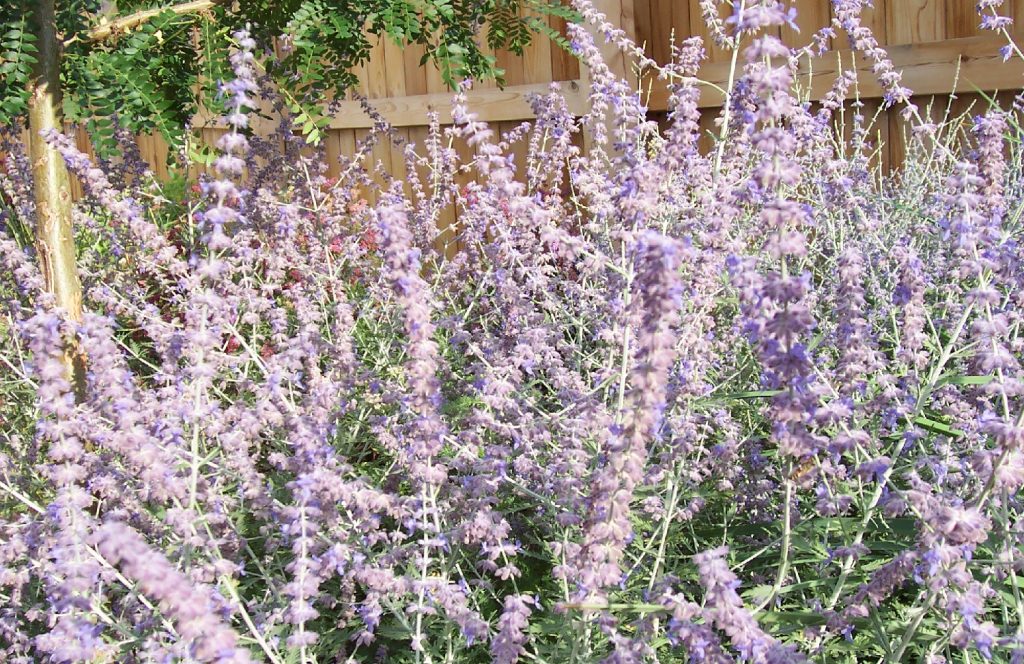
Lavender smells stronger than Russian sage
When it comes to fragrance, lavender is the clear winner. This plant is a bit more delicate than Russian sage, but it more than makes up for it with its sprays of iconic flowers and irresistible aroma. If you want your flower garden to smell as good as it looks, lavender is the best plant to go with.
Lavender’s powerful fragrance makes it an ideal companion plant for a variety of ornamentals, including roses, marigolds, and daisies. While the plant’s pungent foliage works to repel harmful bugs, its nectar-rich blooms attract pollinators and predatory insects that help keep pest levels down in your garden.
Both plants should be pruned carefully
How you prune these plants determines how well they perform. Russian sage should be pruned in the fall or early winter after the first frost when the plant has gone dormant. Remove dead branches and damaged limbs to stimulate new growth in the spring. You can be aggressive with this plant, so don’t be afraid to cut it all back if you need to.
Lavender, on the other hand, should be pruned after it blooms in spring or summer. Trim away dead flowers and leaves, and remove broken stems. Shape the plant by removing any asymmetries. You can safely remove up to a third of the plant’s foliage without damaging it. Regular pruning is highly recommended for lavender as this is an effective way to prolong the plant’s life.
Can Russian sage and lavender be grown together?
Absolutely! These two plants share growing requirements, so including them both in your landscaping is a breeze. As long as your soil has a neutral to alkaline pH, these plants can share growing space.
Russian sage blooms shortly after your lavender’s flowers die off. So planting lavender and Russian sage in the same flower bed provides your garden with a burst of purple throughout the growing season.
